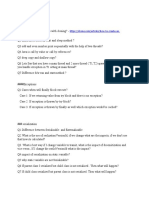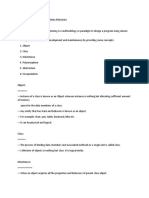0% found this document useful (0 votes)
8 views3 pagesJava Prep Full Sample
This document provides a guide for Java interview preparation, covering frequently asked questions with real-time examples and code snippets. Key topics include the internal workings of HashMap, encapsulation, abstract classes, default methods, and the differences between @RequestParam and @QueryParam. Each question is answered with explanations and relevant code demonstrations to aid understanding.
Uploaded by
JanaCopyright
© © All Rights Reserved
We take content rights seriously. If you suspect this is your content, claim it here.
Available Formats
Download as PDF, TXT or read online on Scribd
0% found this document useful (0 votes)
8 views3 pagesJava Prep Full Sample
This document provides a guide for Java interview preparation, covering frequently asked questions with real-time examples and code snippets. Key topics include the internal workings of HashMap, encapsulation, abstract classes, default methods, and the differences between @RequestParam and @QueryParam. Each question is answered with explanations and relevant code demonstrations to aid understanding.
Uploaded by
JanaCopyright
© © All Rights Reserved
We take content rights seriously. If you suspect this is your content, claim it here.
Available Formats
Download as PDF, TXT or read online on Scribd
/ 3




















































